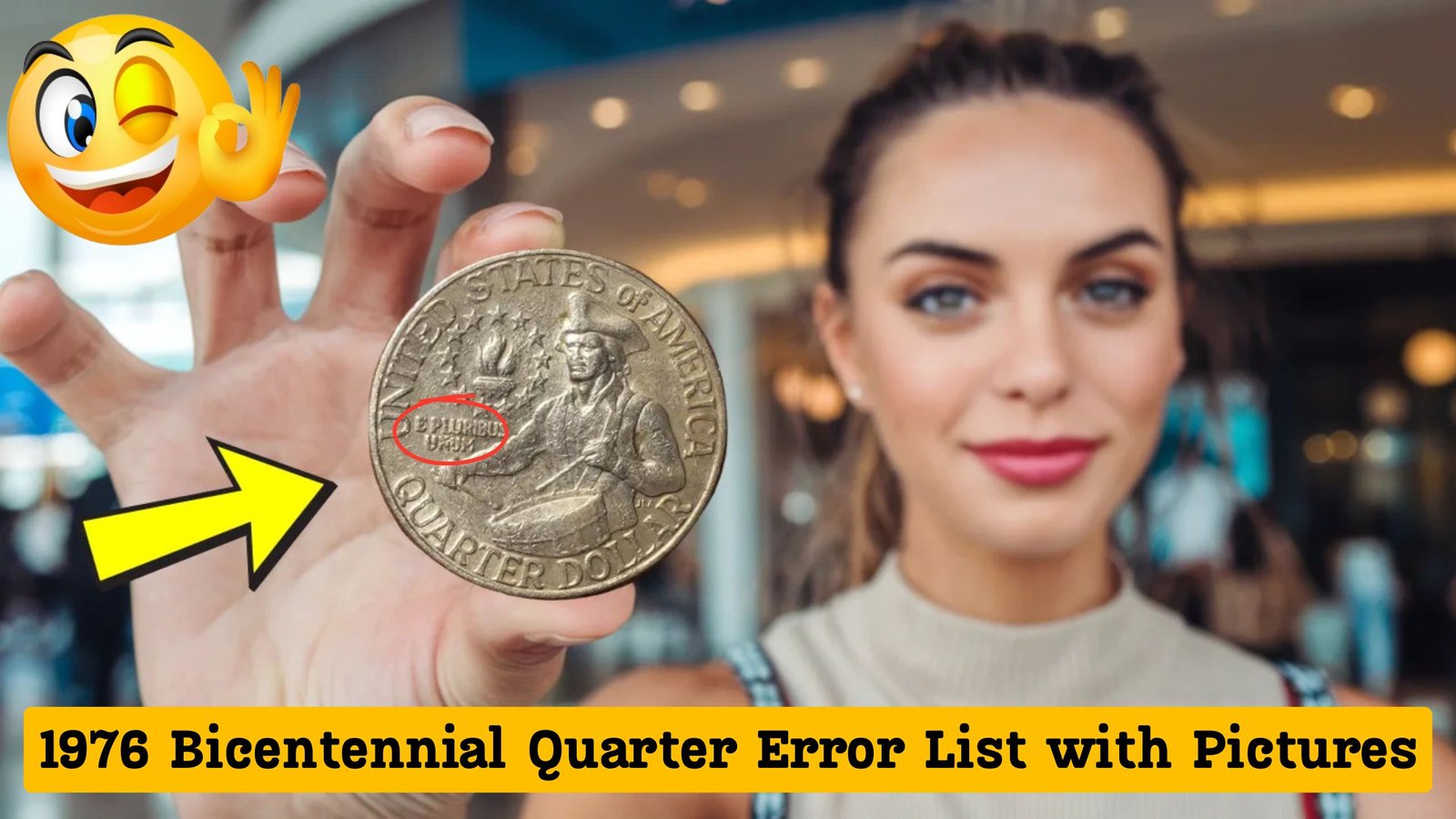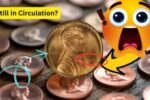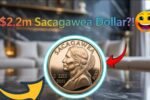The 1976 Bicentennial Quarter is one of the most iconic coins in U.S. history, issued to celebrate America’s 200th year of independence. While millions were struck and widely circulated, some were produced with notable mint errors that have caught the attention of collectors and coin experts alike. These errors can make a simple quarter worth significantly more, especially when accompanied by clear photos to confirm authenticity and detail.
Double Die Errors
What is a Double Die Error? A double die error occurs when the coin die is misaligned during the hubbing process, causing the design to be imprinted twice in slightly different positions. This results in visible doubling of text or design elements on the coin.
Where to Look for It: On the 1976 Bicentennial Quarter, common areas to find doubling include the word “LIBERTY,” “IN GOD WE TRUST,” and the date “1776–1976.” The drummer’s hands and drumsticks are also potential areas of doubling. High-quality images are vital to identify the subtle or dramatic doubling features.
1976 Bicentennial Quarter Errors
| Error Type | Description | Rarity Level | Visual Identifier |
|---|---|---|---|
| Double Die | Doubling of letters or design features | Medium | Blurred or doubled text or image |
| Off-Center Strike | Design shifted off-center | Medium-High | Partial blank space on coin |
| Clipped Planchet | Crescent-shaped missing portion | Medium | Smooth curved clip along the edge |
| Die Cracks & Cuds | Raised lines or blobs from die damage | Common-Medium | Irregular raised lines or blobs on surface |
| Wrong Planchet | Struck on a blank for another denomination | Rare | Wrong size, weight, or metal color |
Off-Center Strikes
What is an Off-Center Strike? This error happens when a blank planchet is not properly centered in the press, causing the design to be struck off to one side.
Why It’s Valuable: The further off-center the strike is—while still showing part of the date—the more valuable the coin. Off-center Bicentennial Quarters can range from minor shifts to extreme misalignments where half the coin is blank. Photos of off-center examples help differentiate true errors from post-mint damage.
Clipped Planchet Errors
What is a Clipped Planchet? This occurs when the metal sheet used to make coins overlaps or is punched improperly, resulting in coins with crescent-shaped missing sections.
Why It Happens: During blanking, a punch may overlap the edge of the metal strip or another punch, clipping the coin. When a Bicentennial Quarter is missing a portion of its edge in a clean, curved shape, it’s likely a clipped planchet error. Clear photos can help confirm this error by showing the smooth, uniform missing portion.
Die Cracks and Cuds
What Are Die Cracks and Cuds? These errors are caused by wear or damage to the coin die. A die crack is a thin raised line on the coin where the die has cracked. A cud is a raised blob of metal, typically near the rim, where part of the die has broken off.
Why Collectors Care: Though more subtle, die cracks and cuds add uniqueness to a coin. On the Bicentennial Quarter, these may appear near the edges, around the drummer, or through the lettering. Pictures help identify the difference between these errors and post-mint damage.
Wrong Planchet Errors
What Is a Wrong Planchet Error? This error occurs when the Bicentennial design is accidentally struck on a blank meant for a different coin, such as a dime or foreign currency.
How to Spot One: These quarters may be lighter, smaller, or a different color than normal. For example, a Bicentennial design on a copper-nickel dime blank will look undersized and may lack a full rim. Because they are extremely rare, photos and weight measurements are key to confirming authenticity.
Frequently Asked Questions (1976 Bicentennial Quarter Error List with Pictures)
Q1: How can I tell if my Bicentennial Quarter is an error coin?
Start by examining the coin under good lighting or magnification. Look for doubling in the text, off-center designs, or missing edges. Comparing it to known images online or in guides can help. Weighing the coin can also reveal wrong planchet errors.
Q2: Are all 1976 Bicentennial Quarters valuable?
No, only those with verified mint errors or in pristine uncirculated condition carry extra value. Most circulated Bicentennial Quarters are worth face value.
Q3: What is the most valuable Bicentennial Quarter error?
Wrong planchet errors and extreme off-center strikes are typically the most valuable. Some can sell for hundreds or even thousands depending on rarity and condition.
Q4: Do I need a coin grading service to confirm my coin is an error?
For valuable errors, yes. Third-party grading services like PCGS or NGC can authenticate and grade error coins, which helps in valuation and resale.
Q5: Can I find these error quarters in circulation today?
It’s possible, though rare. Searching through old change, rolls of coins from the bank, or inherited collections may yield error coins.




